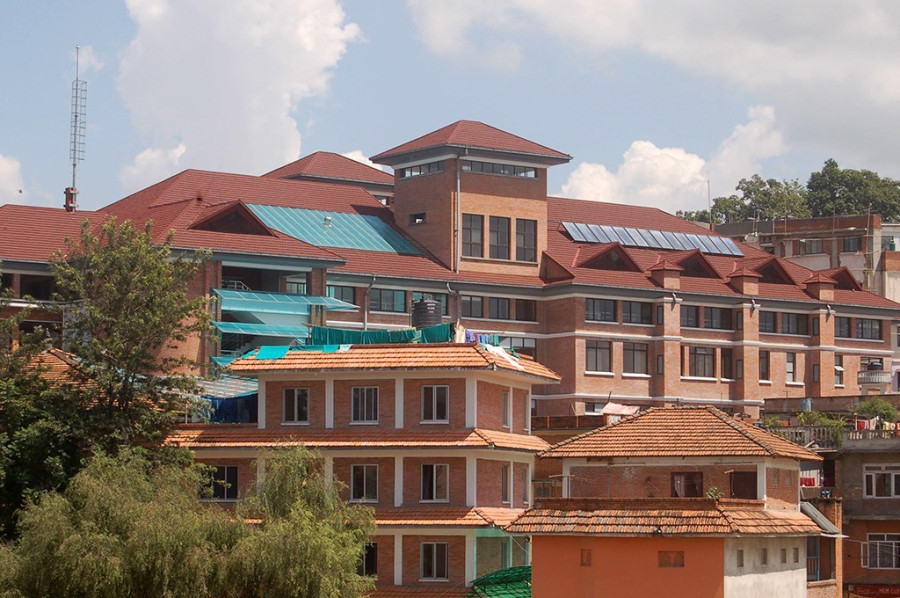Health
Tilganga Institute of Ophthalmology recognised as WHO’s collaborating centre
The hospital is the first health facility in the country to get such recognition from the UN health agency.
Arjun Poudel
“We have already received the recognition letter from WHO Regional Office in Delhi,” Dr Reeta Gurung, chief executive officer of Tilganga Institute of Ophthalmology, told the Post. “The chief of the WHO Country Office in Nepal will hand over the certificate to us on Monday.”
Tilganga Institute of Ophthalmology will be part of 573 collaborating centres of the UN health agency across the world.
Dr Gurung said that the WHO would collaborate with the institute in the quality formulation and implementation of blindness programme in the South East Asia Region. The institute has to support the UN health agency in research and prepare ophthalmic human resources for the South East Asia Region.
“The recognition of the Tilganga Institute of Ophthalmology by the WHO as its collaborating centre is a huge achievement for the hospital and the country. It was long overdue. We were prepared for this title long ago,” Dr Sanduk Ruit, executive director of the institute, told the Post.
According to Dr Ruit, who helped found the hospital in 1994 to provide free service to those who cannot afford to pay for eye treatment, said the recognition as a collaborating centre of the UN health agency is a huge achievement for the hospital as well as for the country.
World’s renowned academic and scientific institutions, recognised by the UN health agency as its collaborating centres, share their experience and expertise in the larger interest of the world’s population who need specialised services.
The Tilganga hospital provides services to over 400,000 eye patients every year and conducts around 65,000 minor and major surgeries.
Cornea donation and transplantation service are its popular programmes.
The hospital also runs 26 eye care centres in various parts of the country and an eye hospital in Hetauda of Makwanpur district.
The hospital organises eye camps in various parts of the country. Of all cataract surgeries, the hospital provides free services to almost 50 percent of patients, according to Dr Gurung.
Likewise, the hospital has also been producing ophthalmologists, optometrists and ophthalmic assistants.
Ophthalmologists are medical doctors trained to perform eye exams, diagnose and treat disease, prescribe medications and perform surgery. Optometrists basically focus on contact lenses, vision therapy, sports vision, geriatrics, pediatrics, low vision and others.
Likewise, ophthalmic assistants are nurses trained to serve in eye hospitals.
As well as 40 such nurses, the hospital produces around 10 ophthalmologists and as many optometrists each year.
Besides, the institute has been regularly imparting training to ophthalmologists from Ethiopia, Ghana, the Maldives, Indonesia, Myanmar, Thailand, Pakistan, Bangladesh, Bhutan and India, among other countries.
Likewise, the hospital is also conducting over a dozen researches every year in various parts of the country.
The hospital produces intraocular cataract lenses, possibly the cheapest in the world.
Before the hospital started production of the lenses, such lenses used to cost $150-$200. Having produced the lenses at $15 initially, the hospital nowadays produces the lenses that cost less than $7.
Bahgirath Baniya, public relations officer at the hospital, said the WHO has endorsed the institution for the quality care it has been providing and training programmes it has been imparting.
“We hope this will help our hospital and human resources gain more exposure and training from world-class experts,” said Baniya.
***
What do you think?
Dear reader, we’d like to hear from you. We regularly publish letters to the editor on contemporary issues or direct responses to something the Post has recently published. Please send your letters to [email protected] with "Letter to the Editor" in the subject line. Please include your name, location, and a contact address so one of our editors can reach out to you.




 12.99°C Kathmandu
12.99°C Kathmandu













%20(1).jpg&w=300&height=200)
